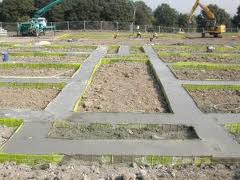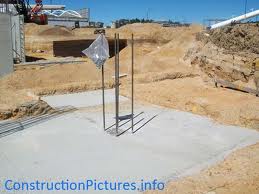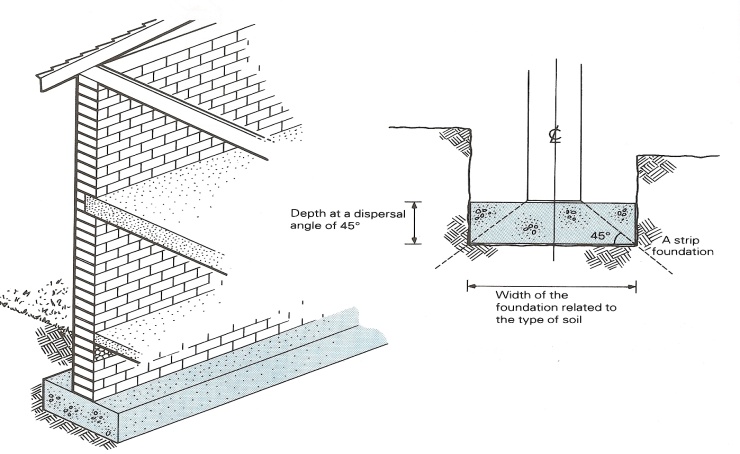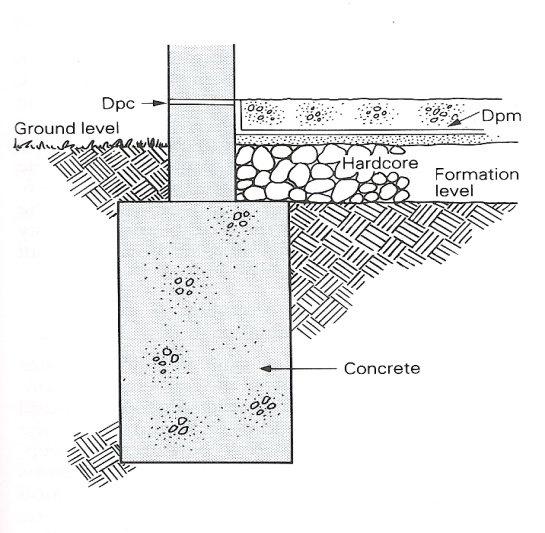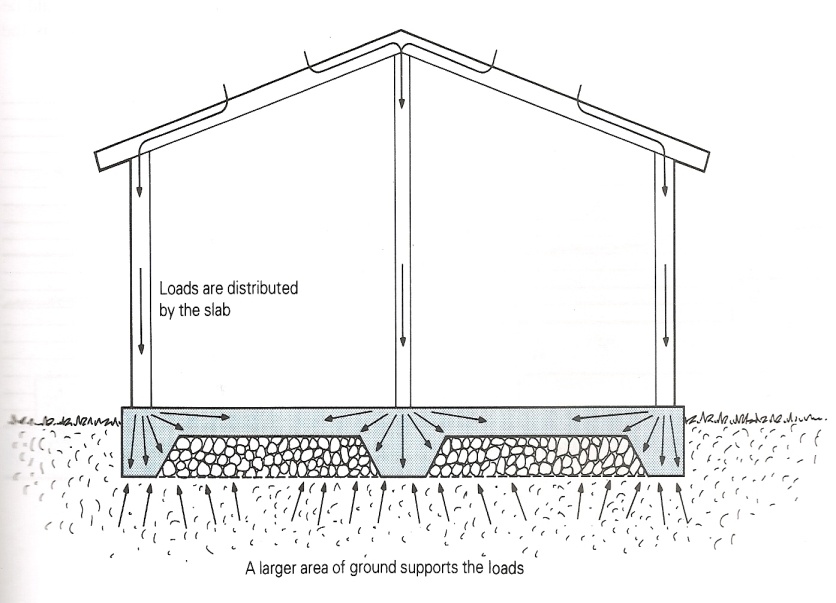
- •English for builders and architects Английский язык для строителей и архитекторов
- •Foreword
- •Структура и содержание пособия
- •The construction-related engineering profession
- •Part I. The art of architecture
- •2 In which situations would you put each point from Ex.1 into the first place?
- •3 Discuss the following quotations:
- •4 A) Look at the title. What does it refer to?
- •The natural beginning
- •5 Read the text again and answer the questions that follow (1-6):
- •7 A) Explain the words in bold from the text and make up sentences of your own. Use English-English dictionaries to help you;
- •8 Give the English equivalents and use them in small situations:
- •9 Use the words below to complete the sentences:
- •10 Choose the correct word to fill in the gaps:
- •11 Fill in the gaps in the following passage with the suitable preposition given below:
- •13 Look at the pictures and name the type of the window using information from Ex.12:
- •14Fill in the gaps with the derivatives of the words in capitals: Benefits of Daylighting
- •15 A) Read the texts and summary questions below:
- •16 Listen to Greg Deale - the general manager of the Daylight Designs - and answer the questions given:
- •17 Watch the video “Solatube interview at the Better Homes & Gardens Live expo - Sydney 2010”. Present the main idea of the video in 4-5 sentences using the expressions from Appendix 2.
- •18 Make up a dialogue using the information from the Ex. 19, 20. One of the students is Solatube Daylighting Systems manager and another one is a customer.
- •19 Study the table and put the materials in the order of your preference. Discuss it with your partner using the expressions from Appendix 1: frame and sash construction
- •20 Express your opinion on the problem raised in Ex.15 and discuss it with your partner using the expressions from Appendix 1.
- •21 Read the abstract from a report “Solatube® Daylighting System” by y. Selyanin and summarize it in 100-150 words in English. Use clichés and word combinations from Appendix 2:
- •2 2 Information for curious ones:
- •23 Topics for projects and presentations:
- •What is “architecture”?Read the following information and compare your answer:
- •A) What architectural styles do you know?Define “architectural style” as you see it:
- •D iscuss the following quotations:
- •4 A) In what context do you think the following words and phrases will appear in the text?
- •Read the text quickly and check your answers: egyptian architecture
- •5 Read the text again and answer the questions that follow (1-5):
- •6 A) Find in the text the synonyms for the following words:
- •7 Choose the right sentence:
- •8 Give the English equivalents to the following and use them in small situations:
- •9 Fill in the gaps in the following passage with a suitable preposition given below: roman arcitecture Part I
- •10 Choose the correct word to fill in the gap: roman arcitecture Part II
- •11 Fill in the gaps with derivatives of the words in capitals: roman arcitecture
- •13 “Architecture and Design” Louis Kahn.
- •14 Watch the video and present the main idea of each episode in 4-5 sentences using the expressions from Appendix 2.
- •15 A) Read the following passages and underline the parts where the answer to each of the following questions is contained:
- •18 Study the following quotations and use them in your own situations:
- •19 Render this text in English: колизей
- •20 Express your opinion on the magnitude of the Roman Coliseum and discuss it with your partner using the expressions from Appendix 1.
- •21 Topics for projects and presentations:
- •Part II. Building materials
- •1 A) Explain how the following words are connected with “bricks”:
- •Coloured mortars
- •9 Use the words below to complete the sentences: clay bricks Part I
- •10 Fill in the gaps with derivatives of the words in capitals: clay bricks
- •11 Fill in the gaps in the following passage with a suitable preposition given below: clay bricks Part III
- •12 Look at the text, separate the words to make sense: clay brick paving
- •13 Listen to “a method of Brick Construction” and do the assignments given below:
- •Listen to the information and present the main idea of it.
- •Answer the questions:
- •14 Watch the video and present the main idea of each episode in 4-5 sentences using the expressions from Appendix 2.
- •15 A) Read the following passages and underline the parts where the answer to each of the following questions is contained:
- •16 Your company wants to place an order with the brick-making plant. Write the letter of inquiry in which you should ask about:
- •18 Study the Table 3.1 and find information about each property:
- •20 Read the text and say what category of bricks is preferable in the territory you live according to the climate conditions in and why: frost resistance
- •21 Topics for projects and presentations:
- •A) Match the words with the pictures (more than one answer is possible):
- •2 Read the following information and offer your ideas of further development and usage of cement:
- •3 Discuss the following:
- •4 A) Transcribe the following words:
- •Read the text and check your answers:
- •5 Read the text again and answer the questions that follow (1-10):
- •9 Use the words below to complete the sentences:
- •11 Fill in the gaps in the following passage with a suitable preposition given below: properties of cement
- •12 Find and correct 10 mistakes:
- •13 Translate into Russian without a dictionary: lime
- •14Listen to Rick Bohan who speaks about cement and concrete.
- •15Watch the video and present the main idea of each episode in 4-5 sentences using the expressions from Appendix 2.
- •16 Render the text in English using the expressions from Appendix 2: виды коррозии бетона
- •17 Your company is ready to place an order with the cement plant. Write the letter of order in which you should:
- •18 Translate the sentences from Russian into English. Be ready to present them not looking at the English equivalents:
- •19 Study the table, find information about each property and make reports in groups of 2-3:
- •20 Read the text. Make up a dialogue based on the text. Use the linking words/phrases from Appendix 1:
- •21 Read the text, find additional information and make a report: concrete properties
- •Topics for projects and presentations:
- •1 A) Explain how the following words are connected with “timber”:
- •Read the information below and compare your answers:
- •2 Speculate on the areas of timber application.
- •3 Discuss the following proverbs:
- •4 A) Transcribe the following words:
- •Read the text and check your answers: timber and timber products
- •Read the text again and answer the questions that follow (1-7):
- •6 A) Find the synonyms for the words given in italics.
- •7 Give the English equivalents to the following and use 5 of them in small situations:
- •8 A) Scan the text, but at ten points fragments have been removed. Study the list with the missing fragments and decide where they go:
- •9 Use the words below to complete the sentences: moisture control
- •13 Look at the text, separate the words to make sense: controlling termites and other insects
- •14 A) Translate into Russian without a dictionary: timber reduces carbon cost
- •14 Audio “Woodworking Information - Different Types of Wood”.
- •1 5Watch the video and present the main idea of each episode in 4-5 sentences using the expressions from Appendix 2.
- •Translate into English using your active vocabulary:
- •21 Study the vocabulary given below and present your project of a wood house.
- •22 Revise material of the Unit 5 and present a full characteristic of a timber.
- •23 Topics for projects and presentations:
- •2 Read the advertisements and in two minutes be ready to speculate on stone applications. What are other areas of stone applications?
- •4 A) Transcribe the following words:
- •Stone and cast stone
- •5 Read the text again and answer the questions that follow (1-10):
- •6 A) Find the synonyms for the following words:
- •Explain the words in bold from the text and make up sentences of your own. Use English-English dictionaries to help you.
- •7 Give the English equivalents to the following and use 5 of them in small situations:
- •8 Read and give a literate translation of the text and make 5 questions to it: slate
- •9 Use the words below to complete the sentences: cast stone
- •11 Fill in the gaps in the following passage with a suitable preposition given below:
- •13 Find and correct 10 mistakes, both spelling and grammar, in each text:
- •14 Audio “Igneous, Sedimentary and Metamorphic Rocks”.
- •15 Watch the video and present the main idea of each episode in 4-5 sentences using the expressions from Appendix 2.
- •16 A) Read the following passage and underline the parts where the answer to each question is contained:
- •Translate into Russian without a dictionary:
- •Read two passages and analyze the problem raised. To study the problem more thoroughly find additional information on the causes of deterioration of stone:
- •19 A) Read the text and express its main idea in 3-4 sentences:
- •Read the instruction how to make a stone cladding. But the phases are messed up. Arrange them into correct order:
- •Talk about stone cladding.
- •20 Read the text. Make up a dialogue based on the text using the expressions from Appendix 1: cast stone vs. Natural limestone
- •21Topics for projects and presentations:
- •2 Read the following passages and offer your ideas to complete them:
- •Appropriate interior paint colors can revitalize every surface of your home, from the walls and ceilings to the doors, paneling, and trim. Thousands of combinations are available…
- •4 A) Transcribe the following words:
- •Read the text and check your answers:
- •Paints, wood stains, varnishes and colour
- •5 Read the text again and complete the sentences (1-10):
- •6 A) Paraphrase the following words:
- •7 Give the English equivalents to the following and use 5 of them in small situations:
- •8 Read and give a literate translation of the text and make 5 questions to it:
- •9 Use the words below to complete the sentences:
- •11 Fill in the gaps in the following passage with a suitable preposition given below:
- •Correct 10 mistakes, both spelling and grammar. Translate the text in a written form:
- •Varnishes
- •13 Translate into Russian without a dictionary: paint and varnish removers
- •Audio “White Stain Varnish -- Panelling Indoors”.
- •16Watch the video and present the main idea of each episode in 4-5 sentences using the expressions from Appendix 2.
- •17 Render the text in English using the expressions from Appendix 2: лакокрасочные материалы в строительстве
- •18 Translate the sentences from Russian into English. Be ready to present them not looking at the English equivalents:
- •19 Read two passages and analyze the problem raised. To study the problem more thoroughly find additional information on safety rules: техника безопасности при малярных работах
- •Safety issues
- •20 A) Read the instruction how to make a clear finish varnish coat. But the phases are messed up. Arrange them into correct order:
- •Talk about clear finish varnish coat.
- •21 Read the text. Make up a dialogue based on the text using the expressions from Appendix 1:
- •22 Topics for projects and presentations:
- •Part III. Architecture of civil buildings
- •2 A) What is the purpose of foundations? Express your opinion in 3-5 sentences.
- •3 Discuss the following:
- •4 A) Transcribe the following words:
- •Foundations
- •10Use the words below to complete the sentences: types of foundation Part II
- •11 Fill in the gaps in the following passage with a suitable preposition given below: types of foundation Part III
- •12 Match the English terms (b) and their definitions (a).
- •13 A)Fill in the table with the information from the text given and your additional info:
- •14 Audio “How to Lay Foundations”.
- •15 Watch the video and present the main idea of each episode in 4-5 sentences using the expressions from Appendix 2.
- •16 Render the text in English using the expressions from Appendix 2: гидроизоляция фундаментов
- •17 Translate the sentences from Russian into English. Be ready to present them not looking at the English equivalents:
- •18 Study the table, find information about each step:
- •19 Read the text. Make up a dialogue based on the text. Use the linking words/phrases from Appendix 1: виды фундаментов, применяемых в строительстве
- •20 Read the passages from Builder’s Foundation Handbook (by John Carmody, Jeffrey Christian, Kenneth Labs), find additional information to each point given in bold and discuss them:
- •21Topics for projects and presentations:
- •Match the columns to remember some technical words for parts of a roof.
- •Read the text again and answer the questions that follow (1-8):
- •6 A) Find the synonyms in the text and rephrase the sentences using them:
- •7 Give the English equivalents to the following and use 5 of them in small situations:
- •8 Read and translate the text and make 5 questions to it:
- •9Use the words below to complete the sentence: popular roofing materials Part I
- •11 Fill in the gaps in the following passage with a suitable preposition given below: popular roofing materials Part III
- •12Translate into English without a dictionary:
- •13 Audio “Components of a Proper Roofing System”.
- •14Watch the video and present the main idea of each episode in 4-5 sentences using the expressions from Appendix 2.
- •15Render the text in English using the expressions from Appendix 2: выявление дефектов кровли
- •18 Read the text and prove in English that roof construction in winter is possible. Устройство плоской кровли зимой
- •19 Read the text. Discuss the problem raised in the text with your partner. Use the linking words/phrases from Appendix 1:
- •20 Study the information below, find additional information on each point and speculate on the problem raised in the text. Use the linking words/phrases from Appendix 1:
- •Ifferent methods of pitched roof construction
- •Topics for projects and presentations:
- •10.1 Types of Walls
- •1 Explain how the following words are connected with “walls”:
- •3 Discuss the following:
- •4A) Transcribe the following words:
- •Read the text and check your answers: walls
- •5 Read the text again and answer the questions that follow (1-7):
- •6 A) Find in the text the synonyms for the following words:
- •7 Give the English equivalents to the following and use 5 of them in small situations:
- •8 Ask questions to the following:
- •9 Fill in the gaps with derivatives of the words in capitals:
- •10 Use the words bellow to complete the sentences: building vaterials for external walls Part II
- •A) Match the parts of arch and words given:
- •12 A) Translate into Russian without a dictionary:
- •Interor wall construction
- •13 Look at the text, separate the words to make sense:
- •14 Listen to the audio “Wall Construction” twice and be ready to answer the questions below(1-5):
- •15Watch the video and present the main idea of each episode in 4-5 sentences using the expressions from Appendix 2.
- •16 Render the text in English using the expressions from Appendix 2:
- •Трехслойная стена с вентилируемым зазором
- •(Парута в.А., Брынзин е.В.
- •Руководство по проектированию и возведению зданий с использованием изделий торговой марки udk gazbeton, Днепропетровск 2009)
- •17 Translate the sentences from Russian into English:
- •18 Read the text, find additional information and speculate on the problem raised: типичные ошибки, допускаемые при строительстве стен
- •19 Read the text. Discuss the problem raised in the text with your partner. Use the linking words/phrases from Appendix 1:
- •20 Study the information bellow, find additional information and speculate on the problem raised in the text. Use the linking words/phrases from Appendix 1:
- •21 Topics for projects and presentations:
- •1 Match the idioms with the definitions and use them in your own situations:
- •2 Explain how the following words and expressions are connected with “floors”:
- •3 Discuss the following:
- •4 A) Transcribe the following words:
- •Read the text and check your answers: floors
- •Read the text again and answer the questions that follow (1-8):
- •6 A) Find the synonyms in the text for the following words:
- •7 Give the English equivalents to the following and use 5 of them in small situations:
- •8 Which questions could you ask to get these answers?
- •9 Use the words below to complete the sentences: the hardcore bed
- •10 Put the steps of making a simple raft foundation slab into the correct order: the raft foundation slab
- •11 Fill in the gaps in the following passage with a suitable preposition given below: upper floor construction Part I
- •12 Fill in the gaps with derivatives of the words in capitals:
- •13Read the text and choose appropriate headings to each step: laminate flooring installation
- •14 Audio “Laminate Floor Installation”.
- •15 Watch the video and present the main idea of each episode in 4-5 sentences using the expressions from Appendix 2.
- •16Render the text in English using the expressions from Appendix 2: деревянные полы
- •17 Translate the sentences from Russian into English. Be ready to present them not looking at the English equivalents:
- •18 Analyze Figure 11.5. And say in what case a suspended concrete structure is possible/ impossible to build and explain your choice.
- •19Read the questions people ask specialists from Peter Cox and suggest your own answers:
- •20 A) Read and translate the text: why are we still having problems with moisture and concrete floor slabs?
- •21 Read the information below and discuss it with your partner: bamboo flooring
- •22Topics for projects and presentations:
- •Unit 12
- •Match the columns:
- •Explain how the following words and expressions are connected with “green building”:
- •3 Discuss the following:
- •4 A) Transcribe the following words:
- •Read the text and check your answers:
- •Read the text again and answer the questions that follow (1-10):
- •6 A) Find the synonyms in the text and rephrase the sentences using the given expressions:
- •7 Give the English equivalents to the following and use 5 of them in small situations:
- •8 Read and translate the text and make 5 questions to it:
- •10Use the words below to complete the sentences: air purification
- •11 Fill in the gaps in the following passage with a suitable preposition given below: water purification
- •12 Translate into Russian without a dictionary:
- •13 Audio ”Passive Homes Save Energy, Money”.
- •14 Watch the video and present the main idea of each episode in 4-5 sentences using the expressions from Appendix 2.
- •15Render the text in English using the expressions from Appendix 2: нанобумага
- •16 Translate the sentences from Russian into English. Be ready to present them not looking at the English equivalents:
- •17 Read the advertisement, visit the given sites, study “Case Studies” and “Factsheets” and write a short summary (200-250 words) about vinyl and its application:
- •18 Group work: choose five questions from the list below, find and present information:
- •19 Read the text, find information on the offered projects and discuss it with your partner: зеленые здания – перспективное направление в строительной индустрии
- •20 Study the information below, find additional information on disadvantages of green buildings and make up a report: the hidden risks of green buildings: why moisture & mold problems are likely
- •21Topics for projects and presentations:
- •Supplementary reading
- •Early christian and byzantine architecture
- •Give a literary translation of §§1, 2, 8.
- •You misheard the information. Make it more exact, putting questions:
- •What is your impression of the information given in the text? Express your ideas in 3-4 sentences.
- •In a paragraph of 70-100 words, and using your own words, as far as possible, summarize what the text tells us about and early Christian and Byzantine architecture.
- •Find and present additional information on any church mentioned in the text.
- •Orders of architecture
- •Mortars
- •6 Give a literary translation of §§7 – 10.
- •What is your impression of the information given in the text? Express your ideas in 3-4 sentences.
- •In a paragraph of 70-100 words, and using your own words, as far as possible, summarize what the text tells us about mortars.
- •Find and present additional information on any type of mortars you like.
- •Unit 4 glass
- •What is your impression of the information given in the text? Express your ideas in 3-4 sentences.
- •In a paragraph of 70-100 words, and using your own words, as far as possible, summarize what the text tells us about the staircases.
- •Unit 5 stairs
- •What is your impression of the information given in the text? Express your ideas in 3-4 sentences.
- •In a paragraph of 70-100 words, and using your own words, as far as possible, summarize what the text tells us about the staircases.
- •Find and present additional information on any staircase layouts you like.
- •Unit 6 doors
- •7 You’ve misheard the information from the previous assignment. Make it more exact, putting questions:
- •Give a literary translation of the first and the last two paragraphs.
- •What is your impression of the information given in the text? Express your ideas in 3-4 sentences.
- •In a paragraph of 70-100 words, and using your own words, as far as possible, summarize what the text tells us about the types of doors.
- •Find and present additional information on any type of doors you like.
- •Appendix 1 communication clichés
- •Appendix 2 review clichés
- •Appendix 3 business letter writing
- •The letter of enquiry (inquiry)
- •Template
- •The letter of order
- •Template
- •The letter of complaint
- •Template
- •Samples
- •English-russian vocabulary
- •Glossary of construction terms
- •Список использованной литературы
Part III. Architecture of civil buildings
“High buildings have a low foundation”
Thomas Fuller (writer)
Unit 8

|
|
|
|
b) strip foundation |
c) pad foundation |
F igure 8.1 Types of Foundation
Match the columns:
|
a) is basically a strip, or ribbon, of insitu concrete running under all the loadbearing walls |
|
b) is used to support individual point load such as that due to a structural column |
|
c) is used to spread the load from a structure over a large area, normally the entire area of structure |
2 A) What is the purpose of foundations? Express your opinion in 3-5 sentences.
Read the following passages and compare your ideas:
The main purpose of the foundation is to distribute the structural load over a large bearing area without causing bearing capacity failure and excessive settlement to obtain a level and hard strata or bed for building operations to increase the stability of the structure as a whole.
A good strong foundation ensures good strong stable ground for a good strong and lasting structure. If you build a house on sand and the sand around one of the corners of the house washes away due to rain water falling off your building the building will begin to sink in that corner and the result will eventually begin cascading further along the buildings edges and sides until the entire building is consumed by leaning caused by unstable ground.
При наших совсем не «плюсовых» зимах слой грунта сверху промерзает. Вода, содержащаяся в нем, замерзает и расширяется. И грунт вспучивается, в зависимости от количества воды в его замерзшем слое. Коэффициент расширения у сильнопучинистых грунтов иногда достигает 12%, а обычно – около 10. Это означает, что при глубине промерзания 1,7 м грунт может приподняться на 10-15 см. Чтобы эти зимние вспучивания не разрушили или не перекосили дом, и нужен фундамент.
3 Discuss the following:
• Write a paraphrase. • Say whether you agree or not, and why.
4 A) Transcribe the following words:
drought, load-bearing, strength, weight, artificial, endanger, plumbing, superimposed, depth, specific.
b) In what context do you think the following words and phrases will appear in the text?
•ground level •stability •protection•natural foundation •artificial foundation •loads and pressure •concrete•specific conditions of the building •types
c) Read the text quickly and check your answers:
Foundations
The foundation is the part of the construction where the base of the building meets the ground.
Foundations are usually placed below ground level because the surrounding ground provides:stability, protection against impact, protection from the extremes of weather such as excessive rain or drought.
Although the depth will vary according to the conditions on site, the best load-bearing ground is normally 900 mm below the surface.
The choice of foundation depends on:
the strength of the natural foundation;
the weight of the building and its loads.
Foundations are divided into two types:
The natural foundation. This is the ground underneath the base of the building after the excavations are completed;
The artificial foundation. This is the structure that lies between the building and the natural foundation.
An artificial foundation transfers the loads from the building to the ground. This prevents settlement or building movement, which might cause instability and endanger the occupants.
The following building loads place the most pressure at the bottom of the building, where the artificial foundation is located (Figure 8.2.):
Dead loads. These are the weights of all the fixed parts of the building such as the walls, floors, roofs, ceilings and services such as sanitary fittings and plumbing;
Superimposed or live loads. These are the weights of the people, furniture and machines that will occupy the building after the completion;
Wind loads. These are the pressures on the walls and roof from the wind. The pressure from wind loads on foundations is more important in tall buildings.
The artificial foundation lies between the natural foundation and the building. Its purpose is to: transfer the building loads to the soil and spread the load evenly across soil that can support the load.
When choosing the correct type of artificial foundation the following conditions should be considered:
the load-bearing capability of the ground;
the depth where the suitable load-bearing soil can be founded;
the distance from trees which can affect the stability of the soil;
the level of the water table;
the normal variation in the water table;
the total weight of the building. If the building is heavier than the soil that was removed, then there will be some settlement as the soil adjusts to the new load.
Although concrete is the preferred material for the construction of the artificial foundations, the form will depend on the specific conditions of the building and environment.
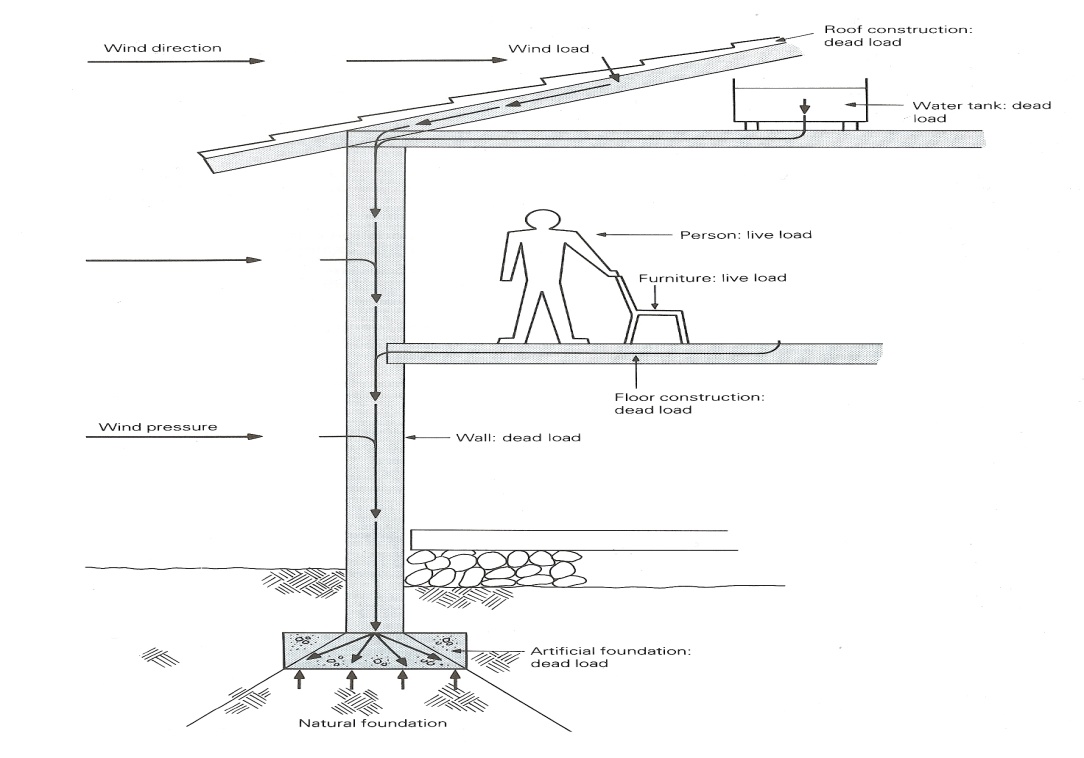
Figure 8.2 Loads on natural and artificial foundations
Types of Foundation
Many small buildings are constructed with load-bearing walls on strip foundations. But you may find out that the soil requires alternative types of foundation which are:
concrete strip foundation;
deep strip foundation;
raft foundation;
piled foundation;
pad foundation;
stepped strip foundation.
5 Read the text again and answer the questions that follow (1-5):
Give the definition of the term “foundation”.
What building loads does artificial foundation carry?
What is the purpose of artificial foundation?
What are the principle conditions when choosing the correct type of a foundation?
What types of foundations have you read about?
Follow-up
6 a) Find the synonyms for the following words:
foundation, to be placed, protection, excessive, to be completed, natural, artificial, settlement, to occupy, to cause, purpose, to support, to transfer, to be considered, environment, to be constructed, to require.
b) Explain the words in bold from the text and make up sentences of your own. Use English-English dictionary to help you.
7 Give the English equivalents to the following and use 5 of them in small situations:
Часть конструкции, естественное основание, искусственное основание, вызывать неустойчивость и подвергать опасности жителей, собственный вес конструкции, рабочая/подвижная нагрузка, ветровая нагрузка, учитывать следующие условия, устойчивость грунта, уровень грунтовых вод, несущие стены, типы фундамента.
8 Which questions could you ask to get these answers?
Geotechnical engineering, being important in many branches such as military, mining, petroleum and in our case civil engineering, concerned with the engineering behavior of earth materials.
The capacity of soil to support the loads applied to the ground is called bearing capacity.
A shallow foundation is a type of foundation which transfers building loads to the earth very near the surface, rather than to a subsurface layer or a range of depths as does a deep foundation.
Piles should be placed on the center line of the walls that need support.
Pile foundations are used in the areas where the other kinds of foundations cannot be constructed.
9 Fill in the gaps with derivatives of the words in capitals:
TYPES OF FOUNDATION Part I The concrete strip foundations in Figure 8.3. are used most frequently. They consist of 1) _____ mass concrete strips poured in the bottom of trenches. These foundations will support load-bearing walls which are centered on the concrete strips to spread the 2) _____ from the walls, roofs and other floor loads evenly. The concrete strip is usually a uniform width and depth.
Figure 8.3Concrete Strip Foundation
The foundation must be wide and deep enough to avoid soil movement that could cause 3) _____. Depending on soil conditions, the maximum depth may be 900 mm. building regulations may suggest the 4) ____ minimum width for strip foundations. The concrete must be at least as thick as its projection from the base of the wall. This ensures that the pressures of the building loads are distributed in the concrete at an angle of 45°. The deep strip foundation in Figure 8.4. is a 5) _____ of strip foundations. Deep strip foundations are usually dug out with a mechanical 6) _____, which cuts a narrow trench that is backfilled with concrete up to ground level. These foundations use more concrete, but reduce the cost of masonry walls and may remove the need for timber support for the trenches.
Figure 8.4 Deep Strip Foundation
Raft foundations are a good 7) _____ if the soil has a poor bearing capacity or if the building loads are quite small, because the cost of8) _____ separate foundations is eliminated. The oversite concrete slab that forms the ground floor of the building becomes the raft foundation (Figure 8.5.).
Figure 8.5 Raft Foundation
The slab can be thickened at the edges with an edge beam and thickened underneath internal load bearing walls. Mesh 9) _____ increases the strength of the raft foundation and distributes the pressures of the building loads 10) _____.
|
CONTINUE
PRESS
STABLE
SUIT
VARY
EXCAVATE
SOLVE
DIG
REINFORCE EVEN
|


